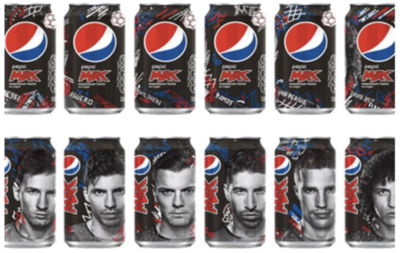In the ever-evolving landscape of digital marketing, video has emerged as a powerful storytelling tool that brands use to captivate audiences, convey their message, and drive user engagement. Here, we explore several case studies of successful brand campaigns that leveraged the unique strengths of video production to achieve remarkable marketing success.
1. Dove: “Real Beauty Sketches”
Campaign Overview: Dove’s “Real Beauty Sketches” campaign featured a forensic artist who drew women as they described themselves and as strangers described them. The stark contrast between these two sets of sketches highlighted the differences in self-perception versus how others see us.
Results: The video went viral, garnering over 114 million views within the first month. It sparked widespread discussions about beauty standards and self-image, significantly boosting Dove’s brand image as a champion of organic beauty that uplifts women.
Key Takeaway: Emotional resonance can profoundly impact viewer engagement and brand perception. Dove’s campaign succeeded by touching on universal insecurities and aspirations.
2. Old Spice: “The Man Your Man Could Smell Like
Campaign Overview: This campaign featured a swift, humorous monologue by a charismatic actor, Isaiah Mustafa, who transitions through various fantastical scenarios, emphasising the appeal of Old Spice products.
Results: The video quickly became a cultural phenomenon, receiving millions of views and transforming Old Spice’s brand image from dated to cutting-edge. It boosted sales significantly and set a new standard for creativity in advertising.
Key Takeaway: Humor, when used correctly, can make a brand relatable and memorable. Old Spice’s approach also highlighted the importance of a strong central character.
3. Always: “#LikeAGirl”
Campaign Overview: The #LikeAGirl video challenged viewers to rethink the commonly used phrase “like a girl,” turning it from an insult into an empowering statement.
Results: The campaign struck a chord globally, sparking a conversation about gender stereotypes and empowering a movement. The video amassed millions of views and shares, dramatically improving Always’ brand relevance and appeal to a younger demographic.
Key Takeaway: Social campaigns that challenge societal norms or stereotypes can generate significant engagement and support, especially from younger audiences.
4. Blendtec: “Will It Blend?”
Campaign Overview: In this series of videos, Blendtec demonstrated their blender’s power and durability by blending various unexpected objects, from smartphones to glow sticks.
Results: These quirky and shocking videos significantly increased Blendtec’s sales and brand awareness. They proved that even products as mundane as blenders could become viral sensations.
Key Takeaway: Originality and a unique selling proposition (USP) can differentiate your brand. Blendtec’s campaign was successful because it was unexpected and consistently entertaining.
5. GoPro: “Fireman Saves Kitten”
Campaign Overview: Shot with a GoPro camera attached to his helmet, a firefighter’s rescue of a kitten showcased the product’s quality and the human side of the brand.
Results: This heartwarming video showcased the GoPro in action, generating millions of views and shares, and highlighted the camera’s utility in capturing life’s heroic moments.
Key Takeaway: Showcasing your product in action, especially in scenarios that tug on your audience’s heartstrings, can greatly enhance your brand’s visibility and emotional connection with the audience.
How to Create a Successful Brand Campaign
Creating a successful brand campaign using video production involves careful planning, creative execution, and targeted promotion. Here are the key steps a brand can take to ensure their video campaign reaches and resonates with the intended audience, ultimately driving engagement and achieving campaign goals:
1. Define Your Objectives
Start by clearly defining what you want to achieve with your campaign. Objectives can range from increasing brand awareness, launching a new product, improving brand image, to driving sales. Clear objectives will guide all subsequent decisions in the campaign process.
2. Understand Your Audience
Know who you are targeting. What are their interests, behaviours, and preferences? Understanding your audience is crucial in crafting a message that resonates and determines the platforms where the campaign will be most effective.
3. Develop a Creative Concept
The creative concept is the backbone of your campaign. It should be original, align with your brand identity, and appeal to your target audience. This concept will dictate the storyline, visuals, and key messages conveyed through the video.
4. Craft a Compelling Story
People connect with stories more than sales pitches. Develop a narrative that engages your audience emotionally and intellectually. The story should have a clear beginning, middle, and end, with a strong message that aligns with your brand values.
5. Incorporate a Clear Call to Action
Ensure that your video clearly communicates what you want viewers to do next, whether it’s visiting a website, signing up for a newsletter, or purchasing a product. This call to action should be easy to understand and act upon.
6. Optimise for Different Platforms
Tailor your video content for different platforms (YouTube, Facebook, Instagram, etc.) considering the technical and audience peculiarities of each. This may involve creating or tweaking different versions of the video for various platforms.
7. Launch and Promote Your Campaign
Deploy your video content through chosen media channels. Utilise paid advertisements, social media, email marketing, and even influencer partnerships to broaden your reach. Timing can be crucial, so choose it based on when your audience is most active and receptive.
By following these steps, a brand can craft a video campaign that not only looks professional but also powerfully conveys its message, connects with its target audience, and achieves its marketing goals.
Conclusion
These case studies demonstrate the diverse ways video can be utilised to enhance brand storytelling, create memorable campaigns, and drive engagement. For brands looking to make a mark, investing in high-quality video production is not just beneficial–- it’s essential.
As your video production partner, we are here to help you craft video content that not only tells your story but also captures hearts and minds.
Small Films are specialists in video content for FMCG brands. We’ve created unforgettable films for the likes of Mallow & Marsh, Lucky Saint and Charlie Bighams and more. If you’d like to discuss your next video marketing project, then do get in touch with one of the team. We’d love to help.


